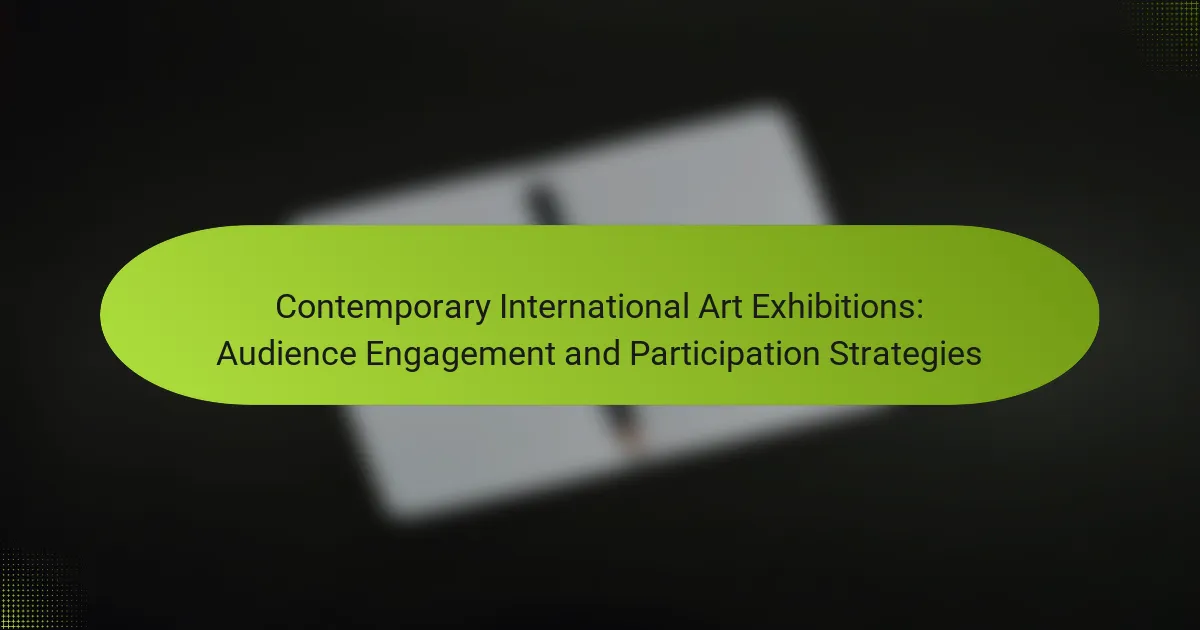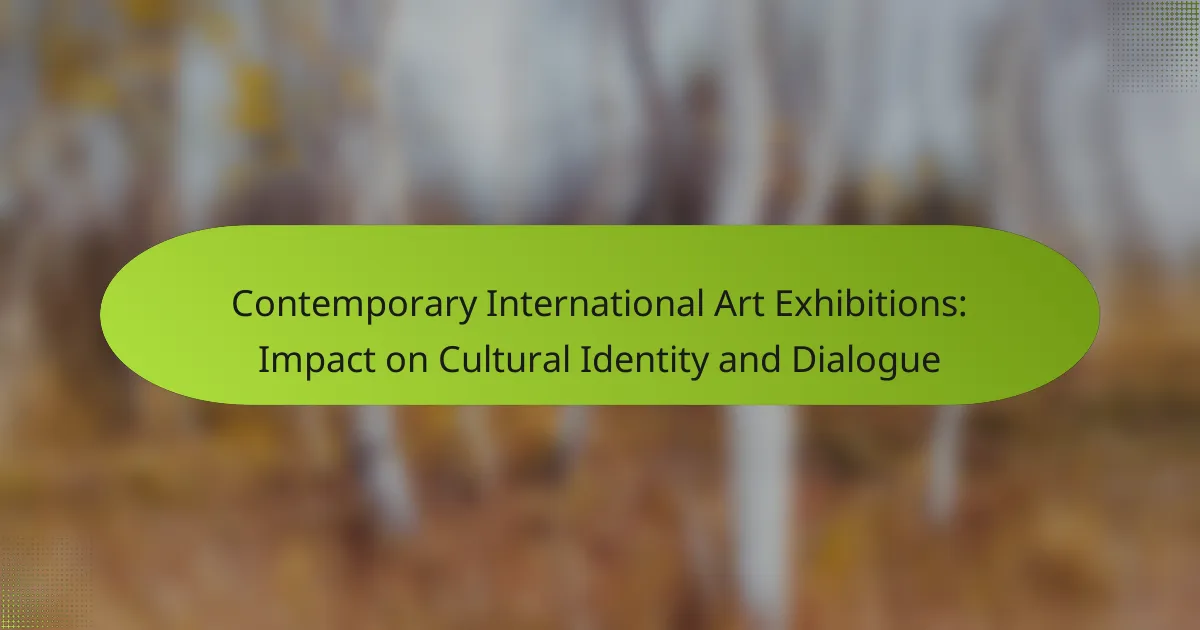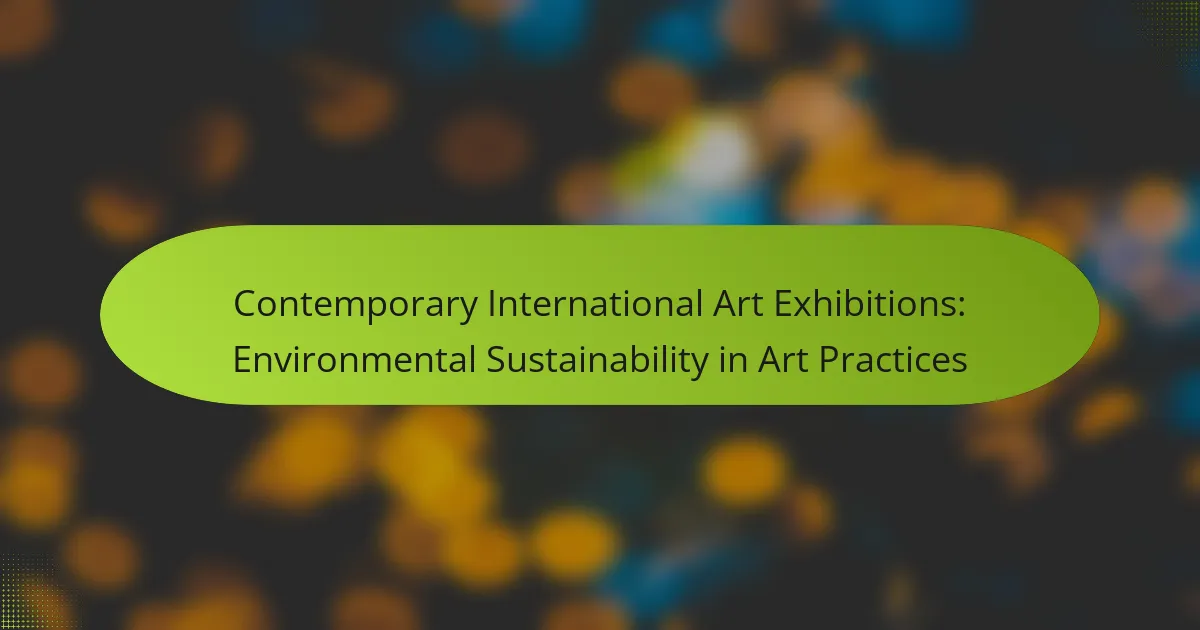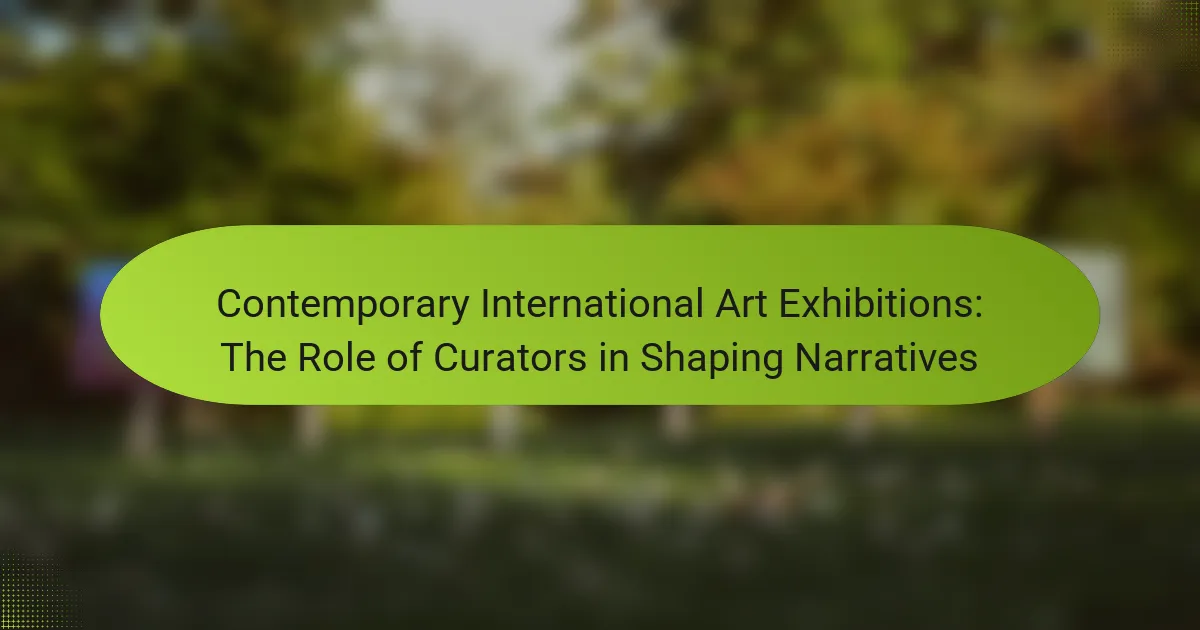Contemporary international art exhibitions are redefining audience engagement through innovations in digital art and technology. Key advancements include immersive installations, augmented reality experiences, and AI-generated artworks. Major global events like the Venice Biennale and Ars Electronica showcase these developments while fostering collaboration between artists and technologists. This article explores how these innovations transform artistic expression and enhance viewer interaction.
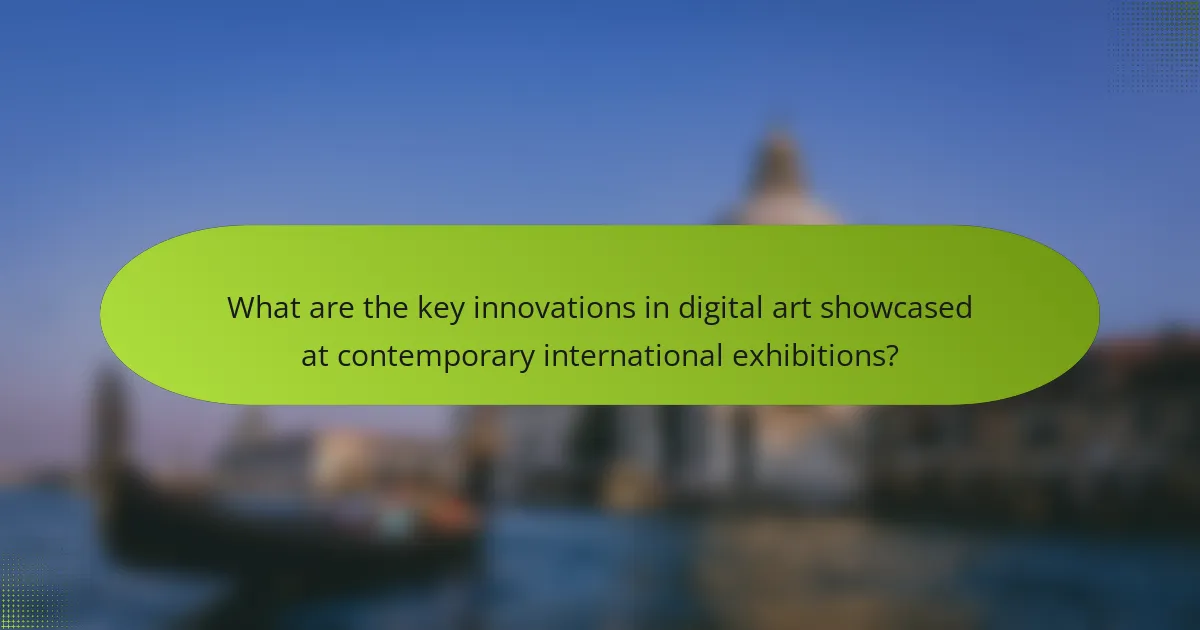
What are the key innovations in digital art showcased at contemporary international exhibitions?
Key innovations in digital art at contemporary international exhibitions include immersive installations, augmented reality experiences, and AI-generated artworks. These advancements enhance viewer engagement and challenge traditional artistic boundaries. For instance, immersive installations often utilize projection mapping and soundscapes to create multi-sensory environments. Augmented reality allows audiences to interact with digital elements in real-time, blending the physical and virtual realms. AI-generated artworks showcase the intersection of technology and creativity, pushing the limits of authorship and artistic expression. These innovations reflect a growing trend towards integrating technology in art, transforming how art is created, experienced, and understood.
How are augmented reality and virtual reality transforming visitor experiences?
Augmented reality (AR) and virtual reality (VR) are revolutionizing visitor experiences in contemporary international art exhibitions by enhancing engagement and interactivity. These technologies allow visitors to immerse themselves in digital art, transforming traditional viewing into dynamic experiences.
AR overlays digital elements onto the physical environment, enabling visitors to interact with artworks in innovative ways. For instance, users can see additional layers of information or animations that enrich their understanding of the pieces. VR creates entirely virtual environments where visitors can explore and experience art from unique perspectives, often accessing installations that are not physically present.
This transformation also fosters inclusivity, allowing remote audiences to participate in exhibitions through virtual tours. As a result, AR and VR are not just tools for display but integral components that redefine how art is experienced and appreciated in the digital age.
Which notable artists are leading the way in digital art integration?
Notable artists leading in digital art integration include Refik Anadol, Beeple, and TeamLab. They are pioneering innovative techniques that blend technology with artistic expression. Refik Anadol utilizes data-driven algorithms to create immersive installations. Beeple’s digital works have gained significant attention, especially his NFT pieces sold for millions. TeamLab combines art and technology in interactive exhibitions that engage audiences. These artists exemplify the fusion of contemporary art with digital innovation.
What role do interactive installations play in engaging audiences?
Interactive installations captivate audiences by creating immersive experiences that encourage participation. These installations leverage technology to transform traditional art viewing into dynamic interactions. They foster emotional connections, stimulate dialogue, and enhance understanding of contemporary themes. For example, installations using augmented reality can personalize viewer experiences, making art accessible and engaging. This innovative approach not only attracts diverse audiences but also promotes deeper engagement with the artwork and its underlying messages.
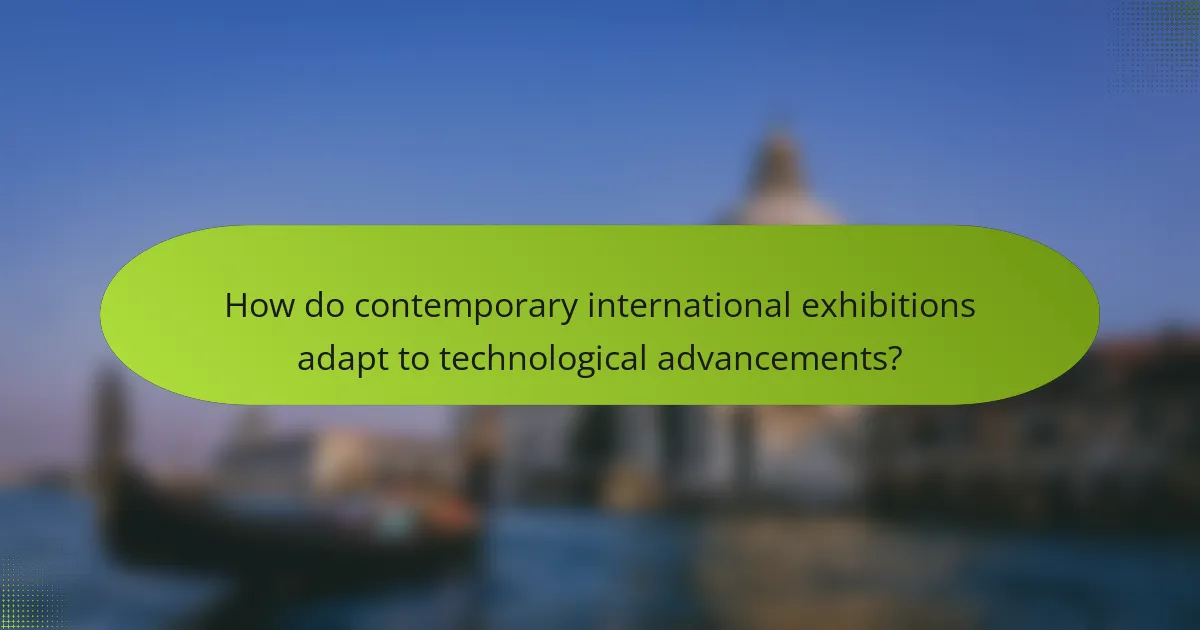
How do contemporary international exhibitions adapt to technological advancements?
Contemporary international exhibitions adapt to technological advancements by integrating immersive digital experiences. These exhibitions utilize virtual reality, augmented reality, and interactive installations to engage audiences. For example, artists create virtual galleries that allow global access to their work. Additionally, data-driven art installations respond to real-time information, enhancing viewer interaction. These innovations not only attract diverse audiences but also redefine the boundaries of artistic expression.
What are the common challenges faced by curators in integrating technology?
Curators face several challenges when integrating technology into contemporary international art exhibitions. These include balancing traditional curatorial practices with digital innovations, ensuring accessibility for diverse audiences, and managing the technical skills required for implementation. Additionally, curators must address the rapid pace of technological change, which can lead to obsolescence, and navigate the complexities of digital rights and ownership in the art world. Collaborating with tech experts while maintaining artistic vision presents another layer of difficulty.
How do these exhibitions balance traditional art forms with digital innovations?
Contemporary international art exhibitions effectively blend traditional art forms with digital innovations by integrating immersive technologies. This fusion enhances viewer engagement and offers new perspectives on classic artworks. Exhibitions often feature augmented reality, allowing audiences to interact with pieces in innovative ways. Additionally, digital installations complement traditional displays, creating a dynamic dialogue between past and present artistic expressions. This balance enriches the cultural narrative and broadens the accessibility of art to diverse audiences.
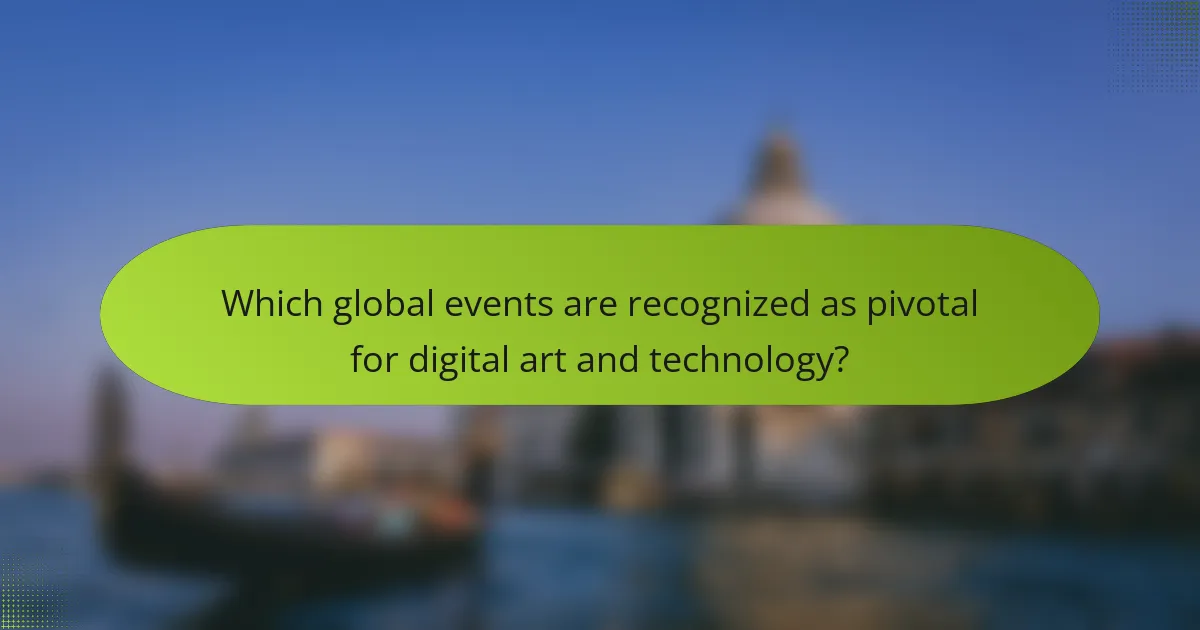
Which global events are recognized as pivotal for digital art and technology?
Key global events pivotal for digital art and technology include the Venice Biennale, Ars Electronica, and the Sundance Film Festival. These exhibitions showcase innovations and foster collaboration among artists and technologists. For example, the Venice Biennale has integrated digital installations, highlighting the intersection of art and technology. Ars Electronica focuses on the role of technology in society, emphasizing digital creativity. The Sundance Film Festival has embraced digital storytelling, showcasing immersive experiences. These events shape the future of digital art through their commitment to innovation and experimentation.
What unique themes emerge from the latest exhibitions in different regions?
Unique themes in contemporary international art exhibitions highlight the integration of digital art and technology. Innovations include immersive installations that engage viewers through augmented reality and interactive displays. Additionally, artists explore themes of data privacy and surveillance, reflecting societal concerns in the digital age. The use of artificial intelligence in art creation is also emerging, challenging traditional notions of authorship and creativity. Finally, sustainability in digital art practices is gaining attention, promoting eco-friendly technologies and materials.
How do cultural contexts influence the presentation of digital art?
Cultural contexts significantly shape how digital art is presented in contemporary international exhibitions. These contexts influence themes, aesthetics, and audience engagement strategies.
For instance, digital art from diverse cultures often reflects local traditions and societal issues. This can manifest in the use of specific visual styles or narratives that resonate with regional audiences. As a result, exhibitions may prioritize artworks that foster cultural dialogue and understanding.
Moreover, technological access varies globally, impacting the types of digital art showcased. In regions with advanced tech infrastructure, interactive installations thrive, while in others, simpler digital formats may be more prevalent. This disparity highlights the unique attributes of art presentation in different cultural settings.
Finally, audience expectations are shaped by cultural backgrounds, affecting how artworks are perceived and interacted with. Curators must consider these factors to create inclusive and engaging experiences that resonate with diverse audiences.
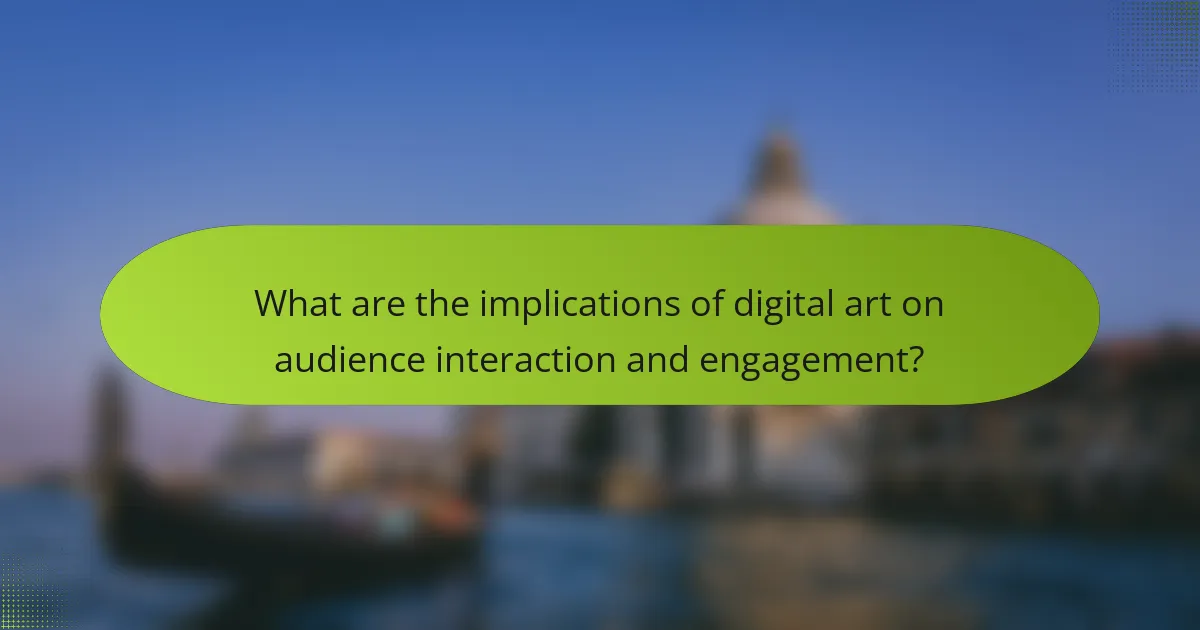
What are the implications of digital art on audience interaction and engagement?
Digital art significantly enhances audience interaction and engagement. It fosters immersive experiences, allowing viewers to become active participants rather than passive observers.
Through technologies like augmented reality (AR) and virtual reality (VR), contemporary exhibitions create dynamic environments. These innovations enable real-time feedback and personalization, tailoring experiences to individual preferences.
Moreover, digital art’s shareability on social media platforms amplifies audience reach. Engaging content encourages discussions, expanding the exhibition’s impact beyond physical boundaries.
In summary, digital art transforms traditional audience engagement by promoting interactivity, personalization, and broader community involvement.
How does social media shape the reach and perception of these exhibitions?
Social media significantly enhances the reach and perception of contemporary international art exhibitions. It enables artists and curators to engage with a global audience instantly, fostering broader discussions about digital art and technology. Platforms like Instagram and Twitter allow for real-time sharing of exhibition highlights, increasing visibility and attracting diverse audiences. As a result, these exhibitions can gain traction beyond physical locations, reaching viewers who may not attend in person. Additionally, user-generated content and online reviews shape public perception, influencing the way exhibitions are received and understood.
What feedback mechanisms are used to enhance visitor experiences?
Contemporary international art exhibitions use various feedback mechanisms to enhance visitor experiences. These include interactive surveys, digital kiosks for immediate feedback, social media engagement, and post-visit emails.
Interactive surveys allow real-time visitor input, improving engagement. Digital kiosks provide instant feedback opportunities, capturing visitor sentiments on-site. Social media engagement fosters community interaction, while post-visit emails gather insights about overall experiences.
These mechanisms enable curators to adapt exhibitions, ensuring they meet visitor expectations and preferences. As a result, they contribute to a more dynamic and responsive art experience.
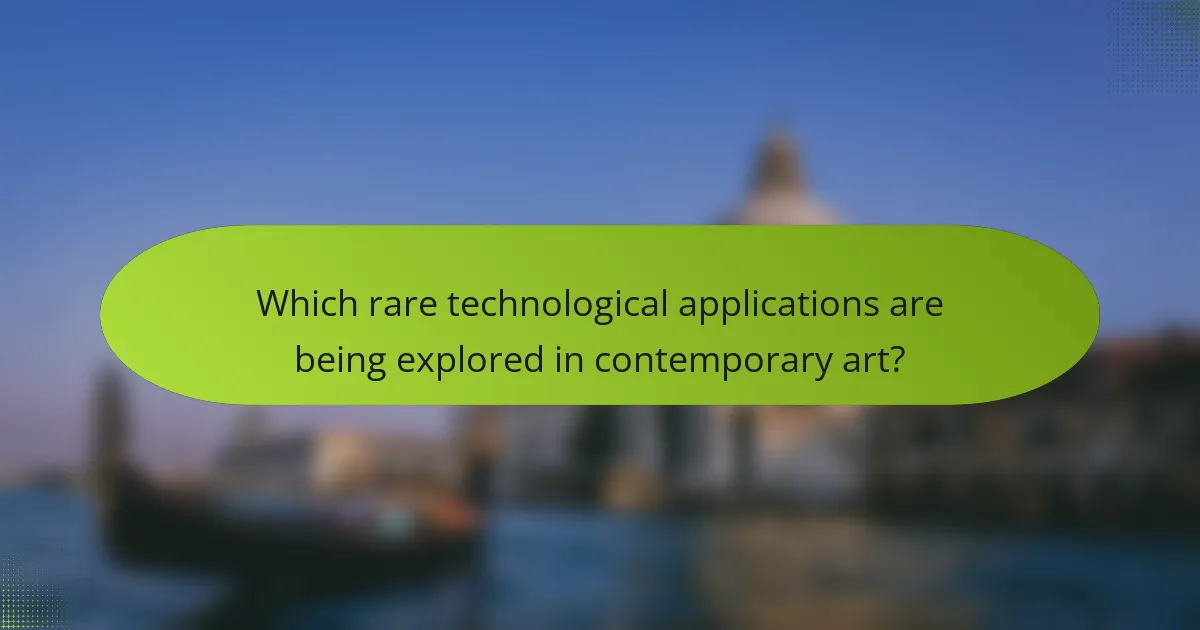
Which rare technological applications are being explored in contemporary art?
Contemporary art is exploring rare technological applications such as artificial intelligence, virtual reality, and blockchain. These innovations enhance interactivity and redefine ownership in digital art. For example, AI-generated artworks challenge traditional creativity, while virtual reality installations immerse viewers in new experiences. Blockchain technology ensures provenance and authenticity, transforming how art is bought and sold.
What is the impact of artificial intelligence on artistic creation?
Artificial intelligence significantly enhances artistic creation by introducing innovative tools and methods. Artists now leverage AI for generating unique visuals, soundscapes, and interactive experiences. This technology fosters collaboration between human creativity and machine learning, resulting in novel artistic expressions. AI algorithms can analyze vast datasets, offering insights that inspire new concepts and techniques. As a result, contemporary art exhibitions showcase works that challenge traditional boundaries and redefine artistic practices.
How are blockchain and NFTs influencing the art market and exhibitions?
Blockchain and NFTs are transforming the art market by enhancing provenance and enabling new revenue streams for artists. Artists can tokenize their work, ensuring authenticity and ownership through blockchain technology. This innovation allows for fractional ownership of artworks, broadening access to collectors. Additionally, NFTs facilitate direct sales from creators to buyers, bypassing traditional galleries and auction houses. Digital art exhibitions increasingly showcase NFT artworks, blending technology with contemporary art, and attracting new audiences. This shift emphasizes the evolving relationship between art, technology, and commerce in the global art landscape.
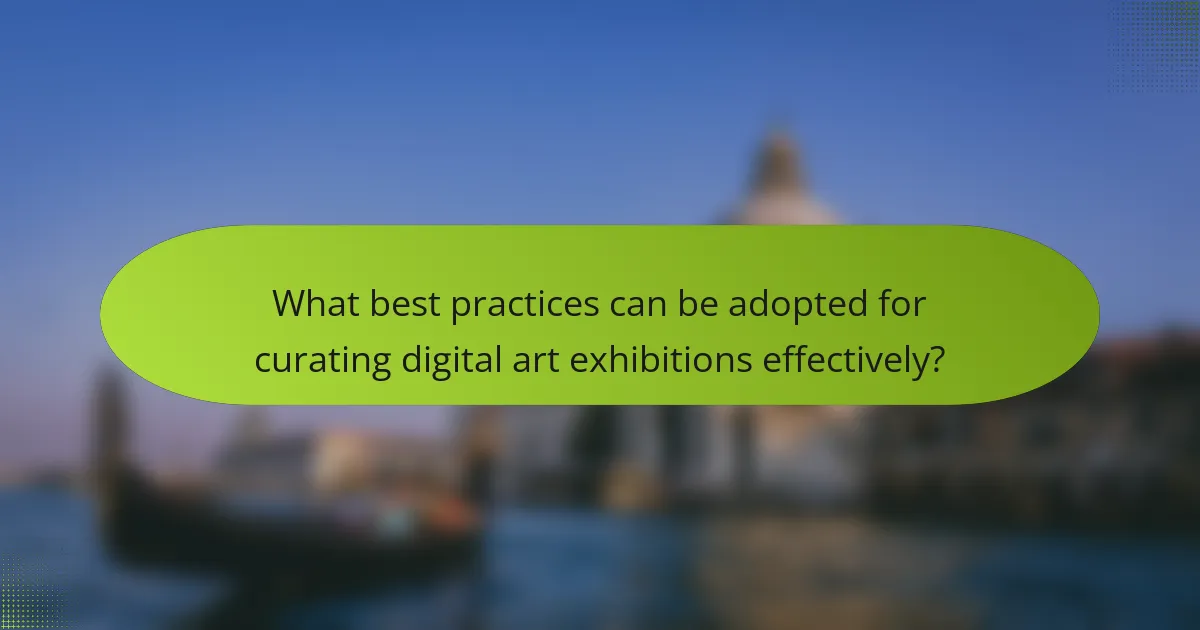
What best practices can be adopted for curating digital art exhibitions effectively?
To curate digital art exhibitions effectively, adopt a clear strategy that emphasizes audience engagement and technological integration. Utilize interactive elements to enhance viewer experience and leverage social media for promotion.
Incorporate diverse digital formats, such as virtual reality and augmented reality, to create immersive experiences. Collaborate with artists and technologists to ensure innovative presentations that captivate visitors. Regularly assess audience feedback to refine future exhibitions, ensuring they remain relevant and impactful.
Establish partnerships with tech companies to access cutting-edge tools and platforms, enhancing the exhibition’s reach and interactivity. By focusing on these best practices, exhibitions can successfully merge contemporary art with technology, creating memorable experiences.
How to ensure accessibility and inclusivity in digital art showcases?
To ensure accessibility and inclusivity in digital art showcases, implement user-centered design principles. Focus on adaptable interfaces, alternative text for visuals, and captions for multimedia.
Incorporate assistive technologies, such as screen readers and keyboard navigation, to enhance user experience. Provide diverse content formats, including audio descriptions and sign language interpretation, to cater to varying needs.
Engage with underrepresented communities to gather feedback and improve inclusivity. Utilize analytics to assess user engagement, ensuring continuous refinement of accessibility features.
What strategies can enhance visitor engagement and retention?
Incorporating interactive technology and personalized experiences enhances visitor engagement and retention in contemporary international art exhibitions. Utilizing augmented reality and virtual reality creates immersive environments that captivate audiences.
Offering tailored content based on visitor preferences fosters a deeper connection with the art. Implementing social media integration encourages sharing and community building, extending the exhibition’s reach.
Data analytics can track visitor behavior, enabling organizers to refine future exhibitions. Engaging workshops and artist talks provide additional layers of interaction, enriching the overall experience.
